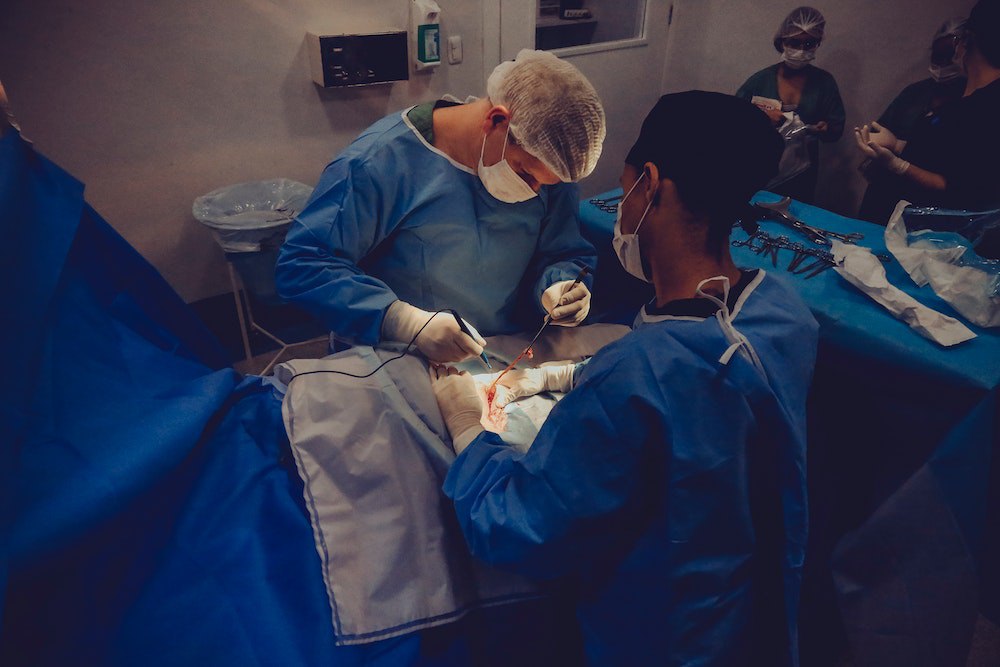Inguinal hernia is a prevalent condition that can cause discomfort and pain. Anyone can develop it, regardless of their occupation or physical activity level. However, there are effective treatment options to alleviate symptoms.
This article will provide information about the symptoms, causes, and treatment options for an inguinal hernia to help you make informed decisions about your health.

Table of Contents
What is Inguinal Hernia?
An inguinal hernia is a medical condition that occurs when a part of the intestine or abdominal tissue protrudes through a weakened area in the groin. “Inguinal” refers to the groin area, where the hernia usually develops. It’s a common condition that affects millions of people worldwide, and if left untreated, it can lead to severe complications.
While some hernias may not require treatment, others may require surgery to prevent complications. If you’re wondering what the surgical procedure involves, you can watch an inguinal hernia surgery video to get a better understanding. The video will show you the surgical techniques used to repair the hernia and the postoperative care required.
There are two types of inguinal hernia: indirect and direct. Indirect inguinal hernias are caused by a defect in the abdominal wall that was present at birth. On the other hand, direct inguinal hernias occur when the abdominal wall weakens due to age, injury, or other factors.
Symptoms of Inguinal Hernia
The most common symptom of an inguinal hernia is a visible bulge or swelling in the groin area. The bulge may appear more noticeable when standing up, coughing, or straining and disappear when lying down. But not all hernias are visible. Some may only be detected through imaging tests.
Other symptoms include:
Pain and Discomfort
In addition to a visible bulge, inguinal hernias may cause pain or discomfort in the groin area. This can range from mild to severe and may be aggravated by physical activity, coughing, or lifting heavy objects.
Nausea and Vomiting
In some cases, inguinal hernias may cause nausea, vomiting, or a feeling of fullness in the abdomen. This can occur when a portion of the intestine becomes trapped or obstructed within the hernia. The condition is known as a strangulated hernia.
A strangulated hernia can lead to severe complications and requires immediate medical attention.
Causes of Inguinal Hernia
Understanding the causes of inguinal hernias can help individuals take steps to reduce their risk of developing this condition.
Here are common causes of inguinal hernia:
Genetics and Family History
One of the primary causes of inguinal hernias is a genetic predisposition. Individuals with a family history of hernias are at a higher risk of developing a hernia. This is because a weakness in the abdominal wall that leads to hernias can be passed down through generations.
Age and Gender
Age and gender are also risk factors for inguinal hernias. Men are more likely than women to develop hernias, and the risk increases with age. The abdominal wall weakens over time, making it more susceptible to hernias.
Lifestyle Factors
Certain lifestyle factors can also increase the risk of developing inguinal hernias. These include smoking, obesity, chronic coughing, and physical activities that involve heavy lifting or straining. These factors can increase pressure on the abdominal wall and contribute to developing a hernia.
Diagnosis of Inguinal Hernia
Early diagnosis of an inguinal hernia is vital for successful treatment and prevention of complications. Individuals who suspect they may have a hernia should seek medical attention immediately.
Physical Examination
Diagnosing an inguinal hernia usually begins with a physical examination by a healthcare provider. During the exam, the healthcare provider will check for a bulge or swelling in the groin area, a common sign of a hernia.
Imaging Tests
In some cases, imaging tests such as ultrasound, CT scan, or MRI may be used to confirm the diagnosis of an inguinal hernia. These tests can provide a more detailed view of the abdominal wall and surrounding tissues, which can help identify the location and severity of the hernia.
Referral to a Specialist
Suppose you are diagnosed with an inguinal hernia. In that case, the healthcare provider may refer the patient to a specialist for further evaluation and treatment. The specialist will assess the size and location of the hernia and recommend the most appropriate treatment option.
Treatment Options for Inguinal Hernia
A watchful waiting approach may be recommended for some individuals, particularly those with small or asymptomatic hernias. This involves monitoring the hernia and symptoms over time to determine if surgical intervention is necessary. However, others may need more treatment options, including:
Hernia Truss
A hernia truss is a device worn over the hernia that provides support and helps to keep the hernia in place. While a hernia truss may temporarily relieve symptoms, it is not a permanent solution. It may even worsen the hernia over time.
Surgery
Surgery is the most common and effective treatment for inguinal hernias. There are two main types of hernia surgery: open and laparoscopic. The hernia is repaired through a single, larger incision in open surgery. In contrast, laparoscopic surgery involves making several small incisions and using a small camera and instruments to repair the hernia.
During the surgery, the surgeon may use a mesh patch to reinforce the weakened area and reduce the risk of recurrence. In some cases, surgery may be performed using a robotic-assisted approach, which allows for more precision and control during the procedure.
Conclusion
The journey of understanding inguinal hernia has come to an end. We have explored its definition, anatomy, symptoms, causes, diagnosis, and treatment options. Timely medical attention is crucial, and it’s essential to discuss the benefits and drawbacks of each treatment option with your healthcare provider to determine the best course of action for your needs. Surgery may be necessary to prevent complications, even if the hernia is asymptomatic.

